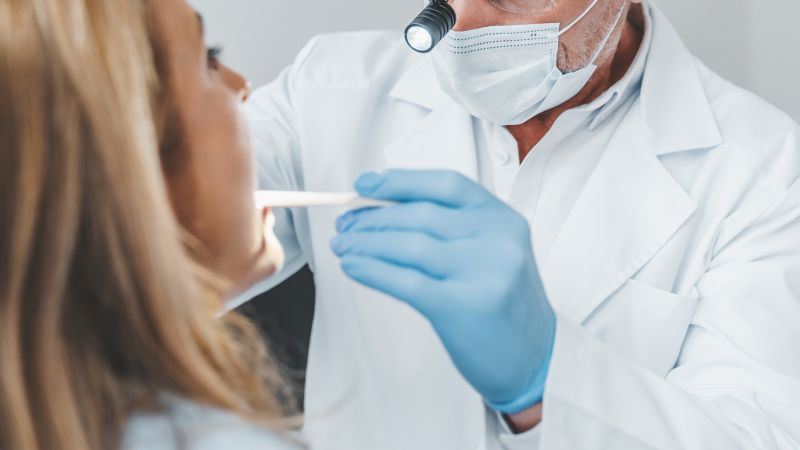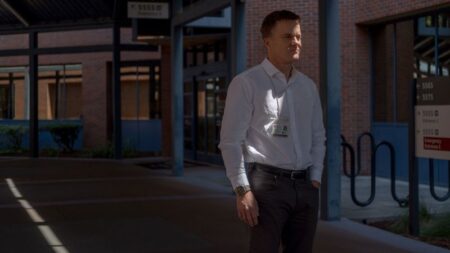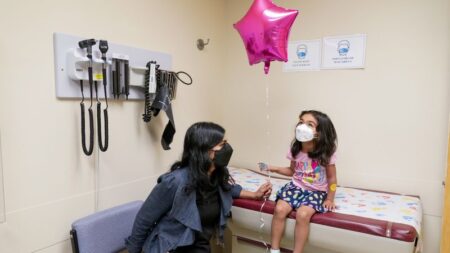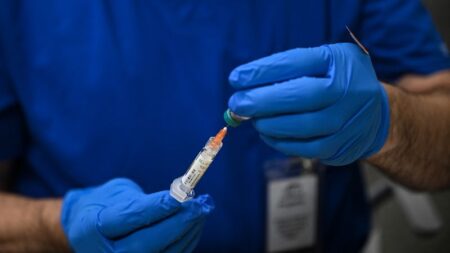In the summer of 1983, a pivotal moment in Katy Golden’s life began within the confines of her suburban Detroit home. At just 5 years old, her mother had prepared the kitchen stocked with Popsicles and bubble gum as preparations were made for her tonsillectomy. This surgery was intended to alleviate ear issues that had plagued her since infancy. Although tonsil removal is a common procedure, it marked the beginning of a challenging medical journey for Golden.
Golden’s initial recovery following the surgery was relatively straightforward. Observations from her family and peers indicated that her recovery path was in line with that of other children who underwent similar procedures. She was soon back to her joyous and chatty self, a sense of normalcy that would eventually be disrupted decades later. Fast forward to the present and, with a hint of irony, Golden found herself heading back to the supermarket for two packs of grape bubble gum. The context behind this shopping trip, however, was unusual: she was preparing for her tonsils to be removed once again.
Remarkably, the decades since her initial surgery had not completely eradicated her tonsils. Instead, they had regrown—nearly back to their original size—resulting in a return of throat troubles that led to this latest surgical intervention. Golden’s journey through medical hurdles has seen her endure a plethora of surgeries related to her inner ear issues; however, in contrast to those past experiences, it had been years since she felt the need to visit an ear, nose, and throat specialist.
Throughout her life, she had dismissed the discomfort of sore throats, attributing symptoms to other factors since she believed her tonsils had been entirely removed. It wasn’t until September of this year, feeling an intense sore throat, that she sought help from Dr. Cynthia Hayes, an otolaryngologist located about an hour northwest of Detroit. During the examination, Dr. Hayes explained her observations to an accompanying medical scribe, inadvertently delivering shocking news to Golden: she still had tonsils that were inflamed.
The disbelief washed over Golden as she struggled to comprehend this new revelation. “I kind of looked around like, ‘Yeah, no, I don’t have tonsils,’” she recalled, expressing her astonishment. Hayes explained that the tonsils must have regrown, a fact that Golden initially found hard to accept.
According to medical professionals, tonsils serve a vital role in the body’s immune system, acting as defenders against pathogens entering through the mouth and nose. Dr. Adva Buzi, an ENT physician at Children’s Hospital of Philadelphia, articulates that tonsil removal can address sleep-related breathing disorders and repeated infections. However, the statistics surrounding tonsil regrowth post-surgery are sparse and suggest it occurs in only 1% to 6% of cases where a specific surgical method, known as intracapsular tonsillectomy, is applied.
The techniques used in tonsil removal drastically vary among surgeons, often influenced by the era of their training. Historically, Golden’s original surgery utilized a “cold technique,” while more contemporary practices, like the “hot techniques” currently employed by Hayes, allow for greater precision in tissue removal. In Golden’s recent surgery, Hayes claimed she was meticulous in removing all residual tonsil tissue, and indications show that the likelihood of regrowth from this point should be minimal.
Post-surgery, the road to recovery has proven arduous for Golden, who has been under the care of family during recovery. She illustrates the pain with the analogy of a canker sore the size of her thumb, expressing surprise at the severity of her discomfort compared to her childhood experience. Nonetheless, her optimism remains, as she hopes to minimize the frequent sore throats that previously hindered her quality of life.
Golden’s story embraces a profound journey, marked by unexpected twists and turns, and ultimately reflects the complexities of medical care, patient perspectives, and the evolution of surgical practices over the years. As she navigates her recovery, blending nostalgia with newfound resilience, Golden representative of countless individuals confronting unforeseen health challenges.












